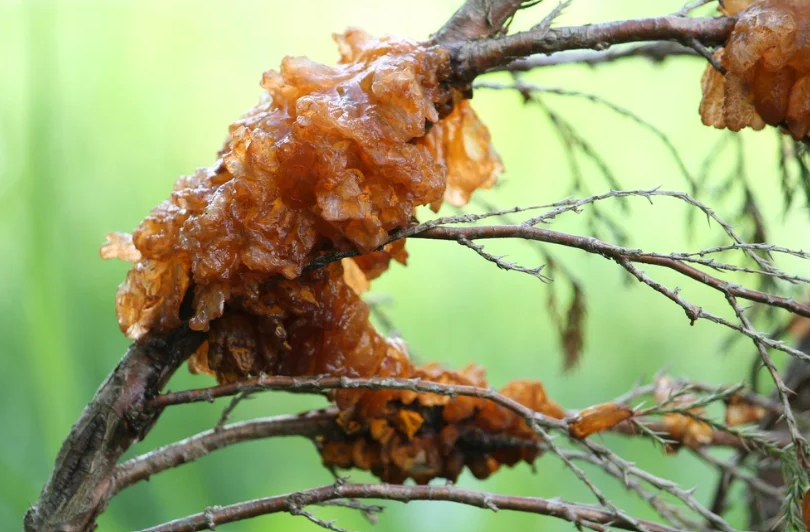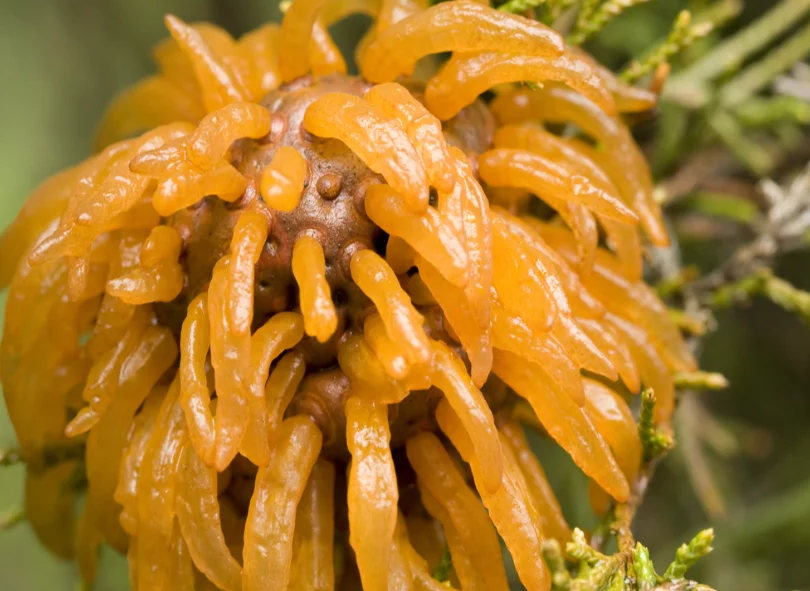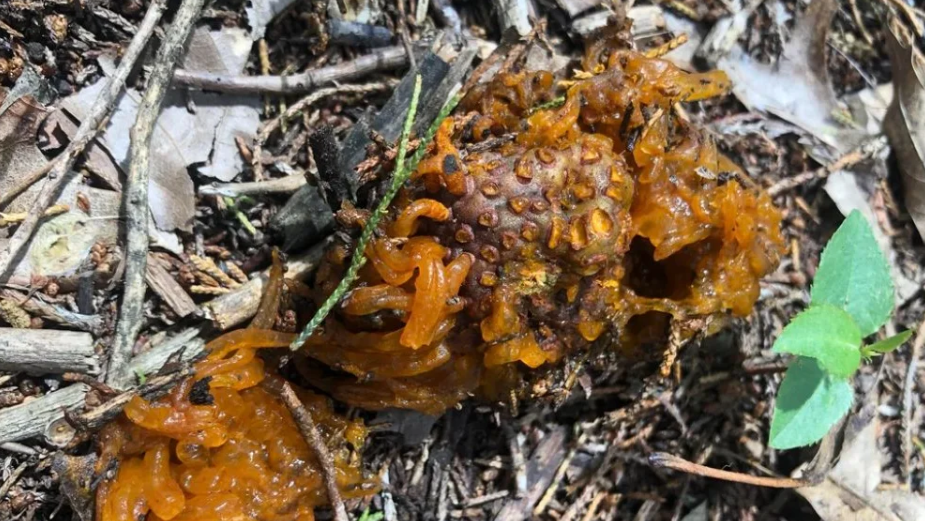If you own a garden and care for your plants, you need to be aware of potential problems. If you come across a mysterious substance called “Jelly Nut” in your garden, here’s what you should know.
Recently, a Redditor from Oklahoma discovered a strange sight in his yard: bright “yellow goo” on his trees and a strange object he described as a “gelatinous alien nut”. Unsure what it was, he turned to the Reddit community for help. He mentioned that the affected tree was a conifer, but he was unable to identify it further.
Almost immediately, another user identified the problem as “cedar and apple rust”. This disease relies on two host plants for its life cycle and primarily affects apple and wild apple trees.

Symptoms vary depending on the tree species. In junipers, a brown gall forms on the branches and creates orange, gelatinous horns in the spring, especially in wet weather. Although the branch behind the gall may die, damage to the juniper is minimal.
In apple and wild apple trees, yellow, circular spots appear on the leaves soon after flowering. By late summer, brown clusters of cylindrical structures develop under the leaf spots, on branches or even fruit.
Galls may take several months to develop from the infection. They appear about seven months after infection begins. After 18 months, they develop into gelatinous masses. In the spring, these galls develop depressions that resemble golf balls. These develop into telial horns that elongate during periods of rain and turn bright orange. After the spores are released, these horns collapse and dry out, although the galls may remain attached to the tree for another year.

Controlling this infection may include pruning the affected areas or simply waiting for the infection to pass, as the infection does not usually kill the trees but can cause disfigurement. Preventative measures such as fungicides or planting resistant apple varieties may also be helpful.
